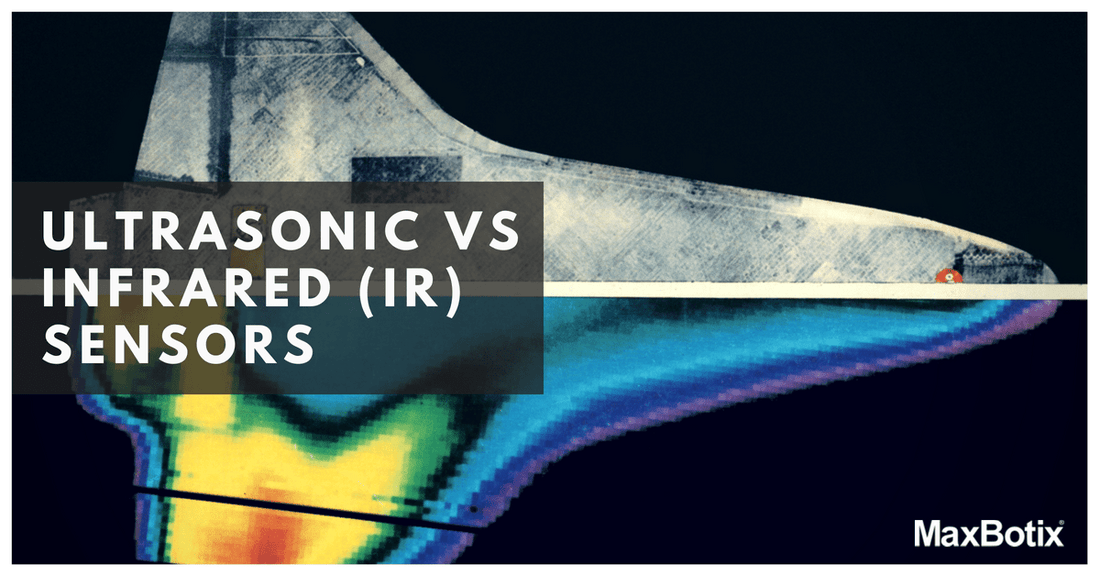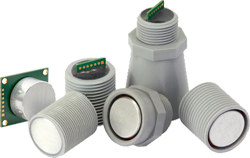When it comes to object detection and ranging, both ultrasonic and infrared sensors offer unique advantages. Selecting the right sensor for your application can significantly impact performance, reliability, and cost-effectiveness. In this blog, we'll explore the differences between ultrasonic and infrared sensors, their strengths and weaknesses, and guide you on how to choose the best option for your needs.
In order to get accurate data and determine the right sensor for your application, there are things that need to be taken into consideration for sensor selections.
- Accuracy – How close the reading is to the true distance.
- Resolution – The smallest reading or change in readings that can be reported.
- Precision – The smallest reading that can be taken repeatedly and reliably.
Ultrasonic vs Infrared – How do they work?
How Ultrasonic Sensors Work
Ultrasonic sensors operate by emitting sound waves at a frequency higher than the human ear can detect—typically around 40 kHz. The sensor measures the time it takes for the sound waves to bounce back from an object, calculating the distance based on this time delay.
Applications:
Ultrasonic sensors are widely used in various industries for distance measurement, object detection, and level sensing. Common applications include parking assistance in vehicles, robotic navigation, and liquid level measurement in tanks.
Basic Sonar Illustration – A transducer generates a sound pulse and then listens to the echo.
Strengths:
- High Accuracy: Ultrasonic sensors can provide precise distance measurements, making them ideal for applications requiring exact data.
- Environmental Resilience: These sensors perform well in various environments, including dusty, foggy, or misty conditions, where optical sensors might struggle.
- Versatility: Ultrasonic sensors can detect a wide range of materials, including metal, plastic, wood, and liquid.
Weaknesses:
- Surface Dependency: The accuracy of ultrasonic sensors can be affected by the texture and angle of the object's surface, leading to potential measurement errors.
- Speed Limitations: The response time of ultrasonic sensors can be slower than infrared sensors, making them less suitable for high-speed applications.
Ultrasonics aren’t as good as Infrared at defining edges of an area. Our dual transducer ShortRange sensor line allows for closer detection of objects. Detect obstacles in your robot and other applications.
The ultrasonic sensors are used for liquid level measurement, object detection, distance measurement, anti-collision detection and pallet detection among others. Ultrasonic sensors are used to improve the operational efficiency and provide additional safety in manufacturing facilities. This is one of the major factors fueling the demand for ultrasonic sensors globally. PRNEWSWIRE
How Infrared (IR) Sensors Work
How They Work:
Infrared sensors use light to detect objects. They emit infrared radiation and measure the reflection or absorption of this light to determine the presence and distance of an object.
Applications:
Infrared sensors are commonly used in security systems, remote controls, and environmental monitoring. They are also popular in non-contact temperature measurement devices.

Source: https://m.eet.com/media/1051336/C0431-Figure2.gif
Strengths:
- Fast Response Time: Infrared sensors offer quick detection and response, making them suitable for high-speed applications like motion detection.
- Non-Contact Measurement: These sensors can measure temperature and detect objects without physical contact, which is beneficial in sensitive applications.
- Cost-Effective: Infrared sensors are generally less expensive than ultrasonic sensors, offering a budget-friendly option for many applications.
Weaknesses:
- Environmental Sensitivity: Infrared sensors can be affected by environmental factors such as ambient light, dust, and temperature variations, which may lead to inaccurate readings.
- Limited Range: Infrared sensors typically have a shorter detection range compared to ultrasonic sensors, which can be a limitation in some applications.
Infrared sensor values normally fluctuate in variant light conditions. When objects pass within the range, the light waves detect those objects and reflect the presence back to the sensor. Their wavelengths are less than that of microwaves. While they’re able to detect motion, they can also measure the emission of heat by an object. Peter Alaric from Lyratron shows how different it is using an IR sensor versus using an Ultrasonic sensor in his AirHarp project.
Comparing Ultrasonic and Infrared Sensors
When deciding between ultrasonic and infrared sensors, consider the following factors:
- Application Requirements: Determine the specific needs of your application, such as the required detection range, speed, and environmental conditions.
- Accuracy vs. Speed: Ultrasonic sensors excel in applications requiring high accuracy, while infrared sensors are better suited for fast detection.
- Environmental Conditions: Ultrasonic sensors are more resilient in challenging environments, whereas infrared sensors may be more susceptible to interference from ambient light or dust.
- Cost Considerations: If budget is a major concern, infrared sensors can offer a more cost-effective solution, but this should be weighed against their limitations.
In Conclusion of Ultrasonic vs Infrared
Choosing your sensor is completely dependent upon your application. There are a lot of limitations in infrared sensors, like the inability to use them in sunlight due to interference. It can make outdoor applications or dark indoor applications difficult. Ultrasonic sensors work using sound waves, and detecting obstacles is not affected by as many factors. If reliability is an important factor in your sensor selection, ultrasonic sensors are more reliable than IR sensors. If you’re willing to compromise reliability for cost, infrared sensors are ideal for your application. Who do you prefer in the battle of sensors detect ultrasonic vs infrared? What type of project are you building? We want to hear from you, for inquiries about our products or help selecting a sensor, click the button below.
A Few of Our Most Popular Products
MB1000 LV-MaxSonar-EZ0
Features of the MB1000, LV-MaxSonar-EZ0, include one-inch resolution, the widest and most sensitive beam pattern of any unit from the LV‑MaxSonar‑EZ sensor line, range information from 6 inches to 254 inches, a 20Hz read rate, and various output options: pulse-width, analog voltage, and RS232 serial.
Buy NowMB7092 XL-MaxSonar-WRMA1
Features of the weather resistant MB7092, XL-MaxSonar-WRMA1, include small target rejection providing range information to the target with the largest acoustic return, a stability filter, centimeter resolution, range information from 20cm to 765cm, a 10Hz read rate, and various output options: analog envelope, analog voltage, and RS232 serial.
Buy NowMB1403 HRUSB-MaxSonar-EZ0
Features of the MB1403, HRUSB-MaxSonar-EZ0, include millimeter resolution, the widest and most sensitive beam pattern of any unit from the HRUSB‑MaxSonar‑EZ sensor line, range information from 300mm to 5000mm, a ~4Hz read rate, and a USB serial output.
Buy Now





